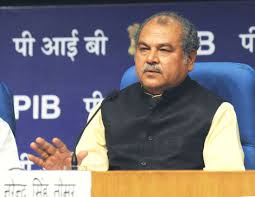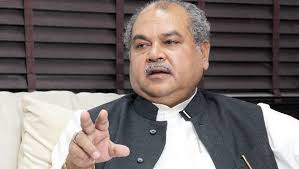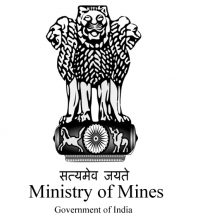
From the era of experiencing major coal shortages, India presently boasts of surplus coal as production of coal increased to 554 million tonnes in 2016-17 from 462 million tonnes in 2013-14.
The significance of this increase of 92 MT of coal production in three years can be gauged from the fact that the same quantum of increase during the UPA regime was achieved in almost seven years.
In 2014, nearly two-third of the coal plants had critical stocks of less than seven days. Today, with increased production, there are no shortages of coal in the country across all thermal power plants.
Besides increasing production, the special emphasis that has been imparted to the quality of coal produced in India (as bad quality of domestic coal was often cited by the user industry to import coal), has not only brought down the per unit cost of coal based power but also considerably reduced the amount of coal used for producing per unit of electricity.
The figures say it all: The amount of coal required to generate per unit of electricity (specific coal consumption) has reduced by 8% in last 3 years. As against 0.69 kgs of coal consumed to produce 1kwh of electricity in 2013-14, only 0.63 kgs of coal was consumed to produce 1kwh of electricity in Apr-Feb 2016-17.
On power tariff front, better coal quality has reduced the cost of power upto Rs.0.30 per unit. The total savings accrued so far to India’s largest thermal power generation company, NTPC due to improved in quality of coal is above Rs. 5000 crore.
Better quality of domestic coal has also led to reduction in coal imports that have reduced by 57.56 MT (Figures upto January, 2017) from 217.78 MT in 2014-15 resulting in saving of foreign exchange of Rs.25,900 Crore.
The efficiency improvements made through Import Coal Substitution, Coal Linkage Rationalisation, Coal Swapping between less efficient and more efficient units, 3rd Party Sampling, coal washing and Correction of Grade Slippage through re-gradation of Mines have yielded notable results.
The Coal Linkage Movement Rationalization of 40.536 Million tonnes alone has resulted in potential savings of Rs 2500 Crore. This apart, contribution to PSUS’s under the coal ministry to Central Exchequer increased by 40% from an average of Rs. 28,599 Cr in three years of UPA Govt. to average of Rs. 40,114 Cr in 3 years of NDA Govt. Similarly, contribution to State Govt. Exchequers increased by 26% from average of Rs. 11,434 Cr. to Rs. 14,422 Cr.
Further, India’s coal sector that was marred with various controversies during the previous regime and process of allocation and allotment of coal mines during those years came under the scanner of various investigating agencies.
After Supreme Court cancelled 204 coal blocks in 2014, the Modi Government undertook transparent e-auction of transparent e-Auctions and allocation of 82 coal blocks leading to potential revenue of more than Rs 3.94 lakh crores over the life of the mine/lease period to the States.
On the mining front, introduction of Transparent Mineral Auctions in India is another major reform.
Under the new law–Mines and Minerals (Development and Regulation) Amendment Act, 2015, transparency and accountability were ushered in and 21 mineral blocks have been successfully auctioned till January, 2017.
The total estimated revenue to the State Governments over the lease period stands at Rs. 73,359 crore while the additional revenue accrued to the state governments over the lease period, due to auction, stands at Rs 57,534 crore which can be used for development work for the poor
In order to provide boost to mining exploration and to unearth India’s mineral wealth, the National Mineral Exploration Policy was brought in. This policy is designed to ensure faster auctioning and development of mines by separating exploration from mine development.
This apart, the creation of National Mineral Exploration Trust for funding exploration is another major initiative. As much as Rs 668 crore has been collected with around 60 exploratory projects taken up.
In order to ensure transparency and accountability in the mining sector, the government launched the Mobile App TAMRA (Transparency, Auction Monitoring and Resource Augmentation) for monitoring of progress on clearance as also post auction mining leases. This is aimed at faster development of mines.
Use of latest state-of-the-art technology has also changed the way mining is conducted in India. Introduction of Mining Surveillance System to check illegal mining and protect public wealth (mineral resources); use of space technology to send triggers for illegal mining activity (which are then physically verified on ground and can be used to stop illegal mining activity) are some such initiatives undertaken by this government in the past three years.
Special emphasis is being given on environment friendly mining and in order to reduce the environmental impact of mining and promote sustainable mining, Star Rating of mines has been introduced.
Then under the Pradhan Mantri Khanij Kshetra Kalyan Yojana (PMKKKY), it is ensured that the proceeds of mineral wealth benefits the local population which is affected by mining.
Proceeds from mining are now transferred to District Mineral Foundation (DMF) to be used for welfare and infrastructure related activities of mining affected areas and people.
So far, total 287 districts in 11 mineral rich states are covered under PMKKKY and as many as 11 out of 12 mineral rich States have framed Rules and established DMFs.
Money collected during the Financial Year 2016 – 17 by the DMFs was Rs. 5,817 crore out of earlier estimated Rs. 6,000 crore.
*****
*Author is senior freelance journalist and a regular contributor of Articles on Energy Sector.
View expressed in the article are author’s personal.







Leave a Reply
You must be logged in to post a comment.